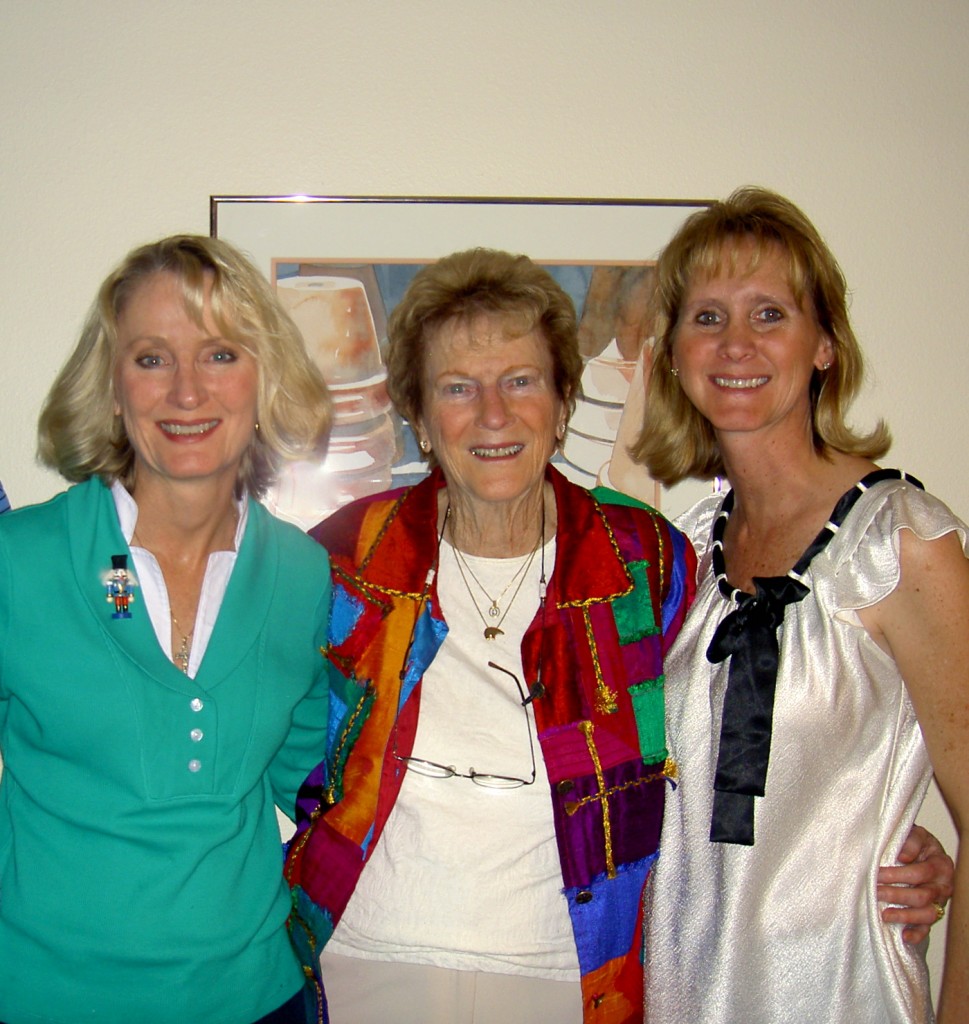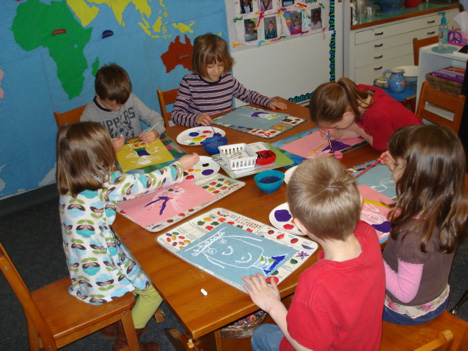History
The Art Docent Program: A Family Legacy

The Art Docent Program: A Family Legacy
Art educator Barbara Herberholz almost did not apply for what turned out to be the job of a lifetime.
In 1983, San Juan Unified School District was looking for a part-time art resource specialist. Barbara applied, was hired, and began developing curriculum to supplement the district’s elementary school classrooms.
“At the time, classroom teachers were mostly relying on pattern work, like craft projects for holidays, with no resources to teach art criticism and art history,” Barbara said. “The head of curriculum said that if I could come up with a program in art that didn’t cost anything, he would implement it. What a challenge!”
A challenge, yes, but one that suited her perfectly. Barbara, a classroom teacher, had co-authored a textbook on early childhood art education with her husband Donald Herberholz, art education professor at California State University Sacramento. She had a passion for art history and loved to teach it to children.
Barbara gradually created 56 lessons with themes such as “People at Play,” “Musicians,” and “Food ”while leading training workshops for teachers. The program used large reproductions of famous works of art and contained hands-on art projects based on the theme of the particular lesson. Soon parents were coming to her, wanting to be part of it. They would bring their sewing machines to stitch up the vinyl portfolios to hold the reproductions.
“We got a small grant from the State Department of Education and California Arts Council to purchase the large prints of famous works of art and employ me full time,” Barbara said.
She led trainings for parents so they could present the prints to classes and elicit responses from students. She also taught them how to do the hands-on art lessons that came with each portfolio. By the second year, the Art Docent Program really took off with parents throughout Placer and Nevada Counties, as well as Elk Grove, gathering for work days to put together the portfolios and art supplies.
“We soon had 1,000 docents in Placer County alone. They celebrated with a Docent Luncheon at the end of every school year,” Barbara said.
Placer County docents are still going strong today, and the Art Docent Program is thriving in more than 200 schools.
“Barbara is an absolute genius in developing, packaging and delivering curriculum in art education that engages students of all ages and makes the world of art accessible to all,” said Crystal Olson, Ed.D., Associate Professor in Arts in Education, CSU Sacramento. “She believes all children have the right to know of their heritage in art that begins with cave paintings and evolves to include current technology.”
“It’s hard to calculate the number of children and their parents that the program has reached over the last 30 years,” Barbara said. “But it’s a safe bet that the number is somewhere around a million.”
The Art Docent Program provides a sequential, interactive education in art history and artistic skills for elementary school children. It can be taught by teachers or by volunteers called “docents” who are led by a coordinator or “head docent.” The program is available for schools, after-school and summer programs, or any occasion where creative kids can make art. Barbara has revised it over the years based on feedback from the docents.
Throughout the 1980s and ‘90s, Barbara led training for parents every fall at many local school districts. Docents who attended were enthralled by her stories about famous artists and their art, and they spent full days making art. Barbara’s husband would often accompany her to help carry art supplies, as well as to bring his expertise and sense of humor.
In the mid-1990s, when Barbara’s eight grandchildren entered elementary school, they got to experience the Art Docent Program in their classrooms—and Barbara’s daughters, Amy Scherschligt and Heidi Grasty, finally got to become art docents.
“I was so excited to be an art docent in my three children’s classrooms,” Amy said. “It was a great way to get to know my children’s friends and their teachers.”
Heidi agreed: “Art was so much a part of our family and now we got the chance to share it. I still treasure the portfolios of art that my girls made.”
Once Heidi and Amy’s children aged out of elementary school, Barbara began taking them to the docent trainings so they could help and also learn from her. Eventually, she handed all the trainings over to her daughters.
“We always joke that it takes two of us to do what Mom used to do on her own,” Heidi said. “Amy and I work well together. She likes to do the talking and presenting the art work and I like to demonstrate how to use the art supplies.”

The Art Docent Program initially used binders of training materials and posters of famous works of art. However, the art posters were bulky, came in over 50 portfolio cases, cost a small fortune and over the years, they took a beating in the classroom. When Amy and Heidi took over managing the program, they began modernizing it.
“We went to Mom and said we had to have a website, logo and email,” Amy said. “And we made a full-color brochure.”
It wasn’t long before the sisters jumped into social media. Art Docent Program can be found on Facebook, Twitter and Pinterest. They produce a monthly e-newsletter, as well.
“When we began hearing that docents were interested in using digital images of the famous works of art, we decided it was time to bring this treasured program into the twenty-first century,” Amy said.
Amy and Heidi worked to bring all the images and docent guides online, refining the lessons and adding examples of student artwork. They especially enjoyed adding one of their dad’s sculptures, a three-foot-tall owl named Henry George, to the “Birds” lesson.
“Mom’s reaction to seeing all 336 works of art online was that it was like seeing old friends,” said Amy. “The digital images looked brighter and clearer than the old poster versions.”
Word of the online version spread and soon 15 schools had purchased the new digital version for the 2011-12 school year.
“Some of the schools were new to the program; two in Washington State and one in Utah,“ said Heidi.
The digital delivery system allows any classroom with a projector and Internet access to display the artwork, and for head docents and docents to access their own training materials online with any web browser. The access codes are supplied by Amy and Heidi, who want to protect their copyrighted material.
“With all the standardized tests and budget cuts we’ve seen in recent years, it’s great that some schools are tapping volunteers to continue to provide art education,” Heidi said. “Kids really do better in all subjects when their minds are stimulated with fun and engaging creative activities. We talk to adults who had this program as children and it’s among the things they remember most about grade school.”
The sisters are pleased that the Art Docent Program is in alignment with the new Common Core State Standards. Schools that implement it can use the visual arts to meet Language Arts Standards in writing, speaking and listening and language. Their program addresses a majority of California’s Visual Art Standards.
“Our time-tested program is still vital and relevant for today’s schools,” Barbara said.
“We grew up making art samples and visiting art museums and bookstores with Mom and Dad,” Heidi said. “We never knew we’d be carrying on our family’s Art Docent Program.”
For more information go to www.artdocentprogram.com